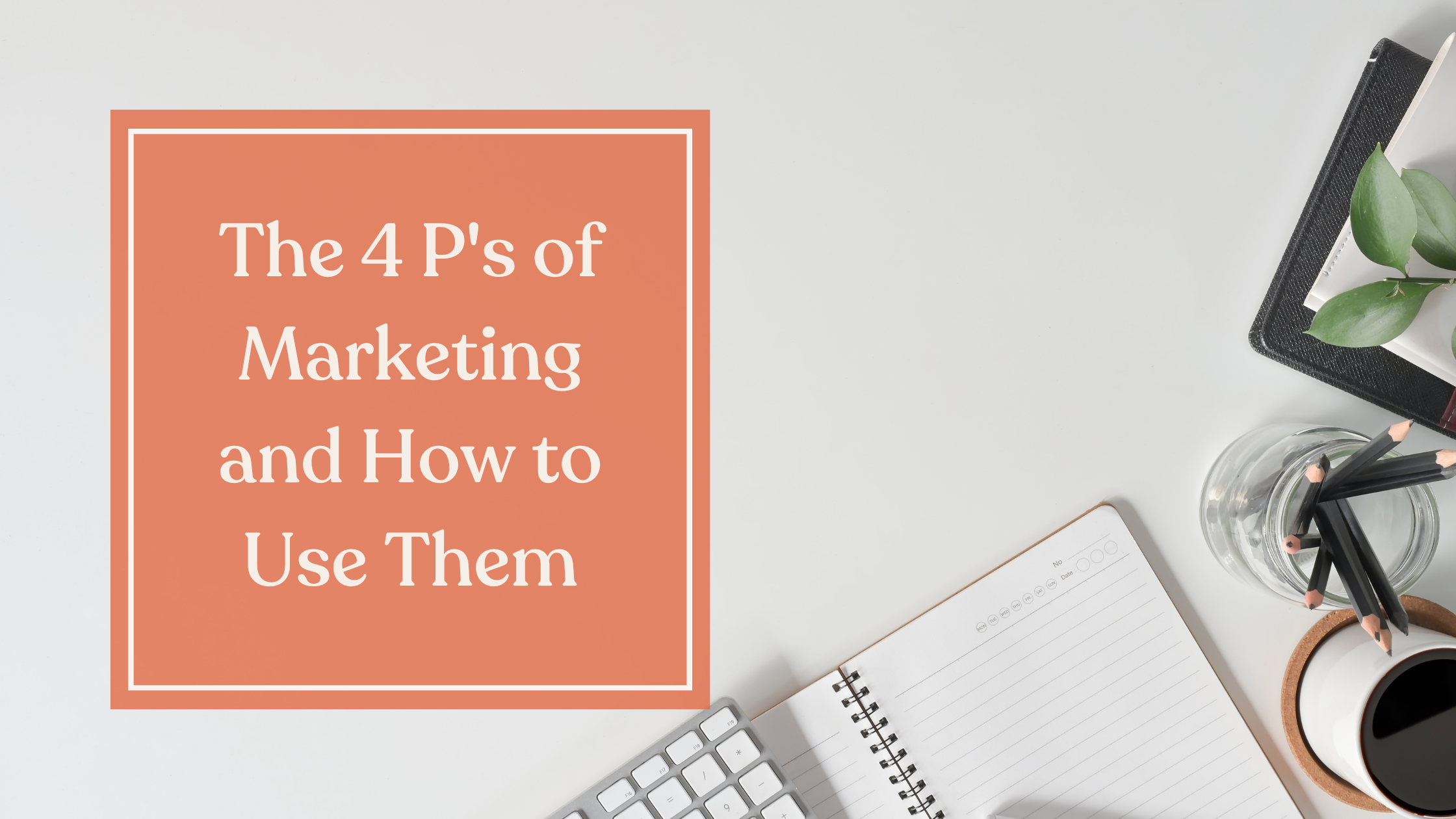If you’ve ever taken a business or marketing class, you’ve probably heard of the marketing mix, or the 4 P’s of marketing and how to use them. Since finishing that business or marketing class, you’ve probably gone on to get a position at an organization that focuses on just one of the 4 P’s, or only one of the many elements that are within the 4 P’s.
If this sounds like you, your vision of marketing has probably gotten very granular since you’re not thinking about every other aspect of the 4 P’s. BUT- when running a business, building a marketing strategy, or working with a marketing strategist to build a strategy, it’s important to think about all 4 P’s – not just the ones that are fun to talk about.
What Are the 4 P’s?
The 4 P’s are product, price, place, and promotion. Simply put, product is what you sell, price is what it costs, place is how and where you sell it, and promotion is how you market it to be sold.
Marketing doesn’t start or stop at promotion, but that’s often what we think. But if marketing doesn’t start with promotion, where does it start? Marketing is going to start with a product.
Product
You can’t build a marketing strategy for something that doesn’t exist, or at least something that doesn’t have the potential to exist. That’s why marketing starts with the product. A product is essentially any deliverable you are providing to your customer or client. This can be a physical product, digital product, a service, an experience, or a combo of those.
Before we can get to anything fun like how the product looks or how it’s branded, we have to identify what the product is, who it is for, and what it can help your target market accomplish or achieve. If you don’t have a quality product that provides something for the client, it is going to be hard for you to grow or scale a sustainable business.
The other 3 P’s all hinge on your product, so establishing that it has real value is crucial in your marketing strategy.
Price
Pricing a product can be a complicated and tangled to find a number that sounds good while still covering your expenses. Oh, and making sure you can pay yourself at the end of the day. Here are a few things to consider when figuring out how to price your product.
Cost to Deliver
The first element to consider in figuring out pricing is cost to deliver the product. This involves whatever materials, labor, overhead, and anticipated marketing costs. What is the bare minimum you can charge to cover all these expenses? What is your desired profit margin? How many products will you need to sell to break even? Answering these questions will help you get an ideal of the scale of your business venture.
Figuring Out Market Price
This bit is fun! Here, you can explore your competition and see what they are charging for a similar product or service. This will help you understand baseline pricing in the market. And trust me- you DO have competition in the market whether you believe it or not! You can even look at various market competitors and their offers and see how yours might be able to cover multiple bases and allow you to bundle the cost of what you have to offer.
Value Proposition
This is how you’re going to justify your price to your consumer. If your product is an all-in-one solution to their problem that is usually only solved by piecemeal, or if you’re a budget friendly alternative to a product that typically has too many bells and whistles- that is your value proposition. Your value proposition will explain why you are priced the way you are without explicitly talking about prince. Here, you can appeal to their logic.
Place
The third P is place. Here, we are talking about the fundamental nature of where the product should be sold. Is it better sold online? In person? In certain geographic areas? You also need to consider if you need people to facilitate these sales. Are you going to need a sales team to demo once people submit inquiries? Are you going to need to have someone available to answer questions either via chat or on a sales call? Is this price point something that buyers can agree to quickly or independently? Or is this an investment that will be something that takes longer to commit to?
It’s totally ok if the person doing all of that is just you! Be sure to consider the future of your organization and sales process if you one day decide you no longer want to be that person.
Promotion
Promotion, the fourth and final P, is most likely what you think about when you think of marketing. It is all the ways you can reach your target audience to promote sales of your product. The other 4 P’s are going to help you determine which promotional strategies will be the most impactful for your business.
Promotion can be divided into three categories: media, methods, and man power.
Media
Media is an umbrella term for the different kinds of promotion you can execute for a product. There is owned media which can be found on your company’s owned channels, such as a website, a brick and mortar location, or physical marketing collateral. Then you have earned media. This is going to be your public relations, features and other publications, podcasts, any type of visibility or publicity event you are part of. If it doesn’t cost you money, it is earned media. Your credibility is earning you a spot on someone else’s channel!
Finally, you have paid media. This is going to be your traditional advertising, whether that is paying for social media advertising, using Billboards, radio, TV, etc. You can get really creative with smaller ways to advertise.
Methods
Methods are going to be the sales, promotions, discounts, and deals used to promote your product. Depending on your industry or product, you could be constantly rotating different promotions. Some industries will never use discounts as an incentive, whether that’s a regulatory thing, or just the positioning of the industry. Price and place are going to play a big part in this area of your promotional strategy, because constantly offering sales and deals does send a message to your consumer. You want to ensure that this message is in line with the rest of your positioning as an organization within the grand scheme of your industry.
Manpower
We touched on the idea of having a salesperson or sales team, but people can play a different role in the promotions process. In price, the role of the salesperson is to close or convert after an inquiry is submitted. The salesperson is there to answer questions, ease concerns and generally “schmooze” the potential buyer until they’re ready to make a decision.
On the promotion side of things, a sales team plays a more aggressive role in the direct pursuit of leads and sales. This can be through direct mail, telemarketing, etc. In my opinion, an unsolicited DM is an unsolicited DM no matter what you’re calling the role of the person who’s sending.
The 4 P’s of marketing: Questions?
Questions about the 4 P’s of marketing? Send me a message over on Instagram or set up a vibe check call where I can further break them down and get your marketing strategy to be its best!




